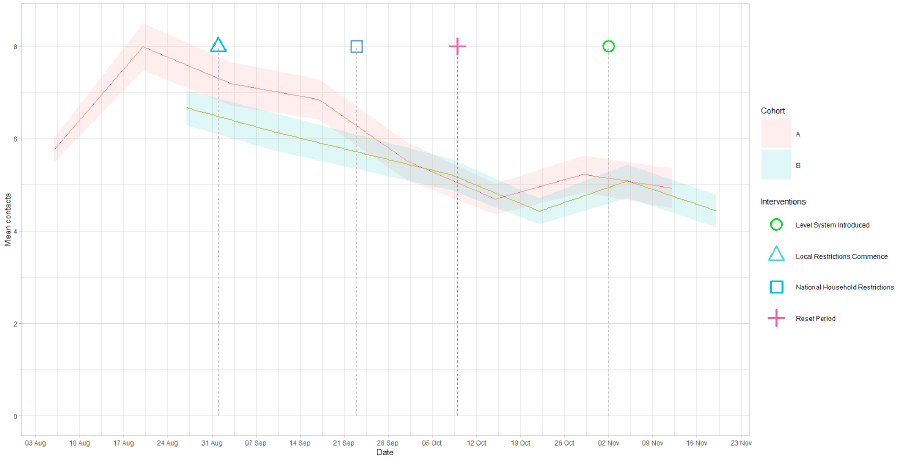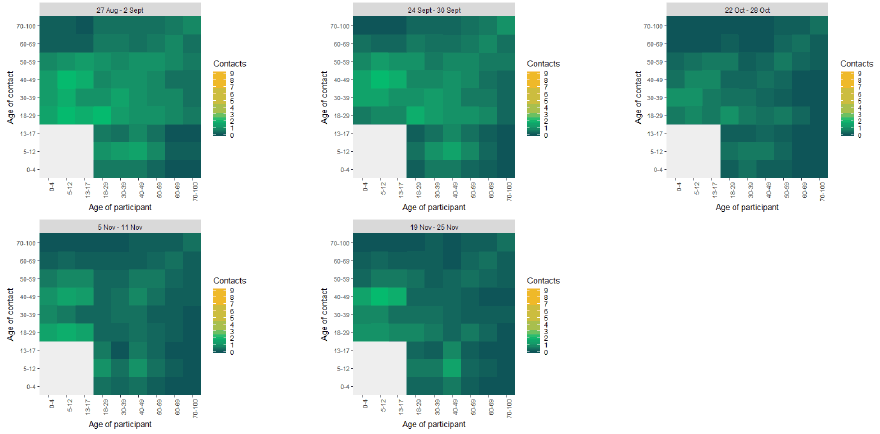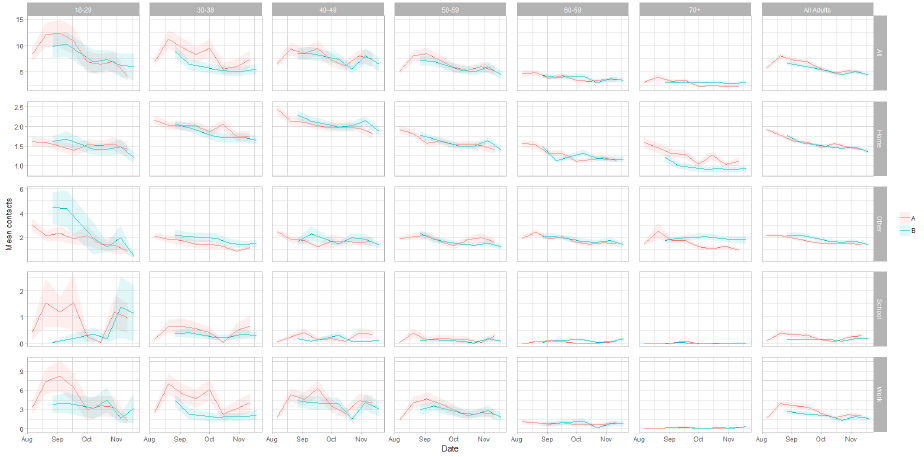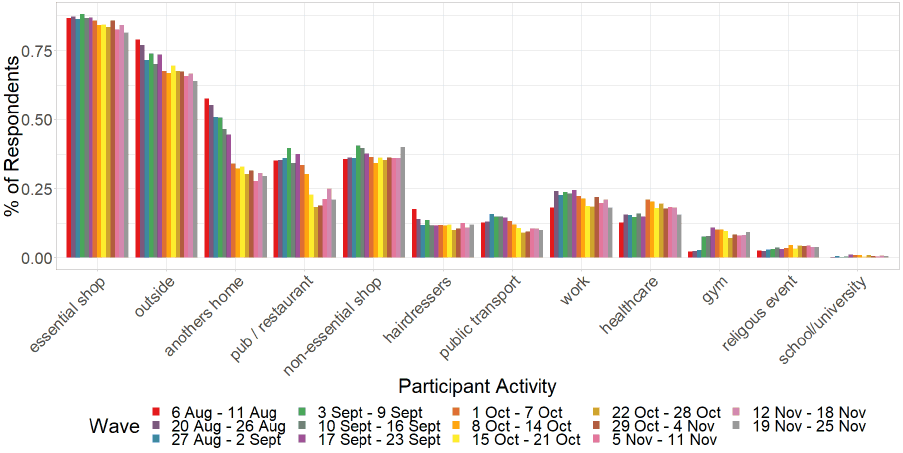Coronavirus (COVID-19): modelling the epidemic (issue no. 29)
Latest findings in modelling the COVID-19 epidemic in Scotland, both in terms of the spread of the disease through the population (epidemiological modelling) and of the demands it will place on the system, for example in terms of health care requirement.
This document is part of a collection
What we know about how people’s contact patterns have changed
The average number of contacts per day are approximately 60% higher than they were at the beginning of the Stay-at-home-advice, and less than half the level pre-Stay-at-home-advice (UK comparison 10.8). Interactions between age groups have decreased since the end of August. This suggests the Protection Level restrictions are having an effect. Older people generally have fewer reported contacts than younger people, but this difference is largely from work and school contacts. There is a drop off in how many people are visiting different locations, particularly in the pubs category.
The Scottish Survey is split into two sample groups, Panel A and Panel B. These are updated every two weeks for each panel (alternating). The following visualisations combine both sample groups and show how their mean contacts change over time (see technical annex in issue 18 of the Research Findings). Data covering the periods from 12 – 19 August (Panel B week 1) and 24 – 30 September (Panel B week 4), have been removed due to anomalous entries.
There was a significant increase when schools returned in August, from 6 to 8 average contacts, however both Panels show a consistent reduction in the number of mean contacts between the end of August and mid-October. Half terms occurred from 5 October onwards while restrictions were introduced on the 9 October. For the panel A survey pertaining to the week beginning 29 October, the mean contacts increased by 11% from 2 weeks prior. This increase is reflected in panel B where mean contacts have increased by 14% for the week beginning 5 November. This follows the end of half term which varies across Scotland, ending between 16 – 27 October. Since the introduction of protection levels, mean contacts have reduced by 12% from the week beginning 5 November to the week beginning 19 November as shown in Figure 10 for Panel B. In the prior week a similar decrease is also seen in Panel A (6%).


The heatmaps in Figure 10 show mean contacts by age group over time, from the start of August to the end of November. This illustrates that individuals initially had an increase in mean contacts however this has steadily reduced for all age groups until the end of October where all respondents had less contact with other age groups compared to the start of August. During the end of half term period (16 – 27 October) there was an increase in mean contacts within the younger age groups which is likely due to individuals returning to work and school. In the most recent survey (19 – 25 November), there has been a decrease in mean contacts between age groups which follows the implementation of the restrictions introduced on 9 November.
As seen in Figure 11, contacts are fewer in older age groups, with the oldest age group having similar levels of contact to the UK at the beginning of the Stay-at-home-advice (2.0 from CoMix). The youngest age group also shows similar levels of contacts to the UK average prior to the beginning of the Stay-at-home-advice (12.1 from POLYMOD[2]) until mid-September, this fell significantly at the start of October and remains the same for the most recent survey.

Both panels show similar behaviour with a downward trend over time in all settings from August to the start of November except for the age group 18-29, which cannot be confirmed due to the large margin of error. For both panels however there was an increase in the work and school settings from the week beginning 29 October for panel A and in the week beginning 5 November for panel B (half term effect) however both panels have both shown a decrease in the most recent wave of the survey. The main difference between age groups is that younger people are having more contacts at work and at school. The middle age groups report a slight decrease in contacts in the other settings in the last 2 weeks and all age groups below 60 report fewer contacts in the home as set out in Figure 11.
As Figure 12 shows, the biggest change in behaviour has been the drop off in the proportion of people that have visited other people’s homes since the commencement to the 1 October, dropping from 58% to 34%. There has been a gradual but less pronounced decrease since this date to 30% for the most recent survey. There has been a significant decrease during October for the number of people visiting pubs (21% in the week of 5 – 11 November, down from 34% for the week of 1 – 7 October) which will be largely due to the restrictions placed on hospitality, introduced on 9 October, and this remains consistent to date. The only increase in behaviour has been in the healthcare and gym settings from August to November.

Contact
There is a problem
Thanks for your feedback